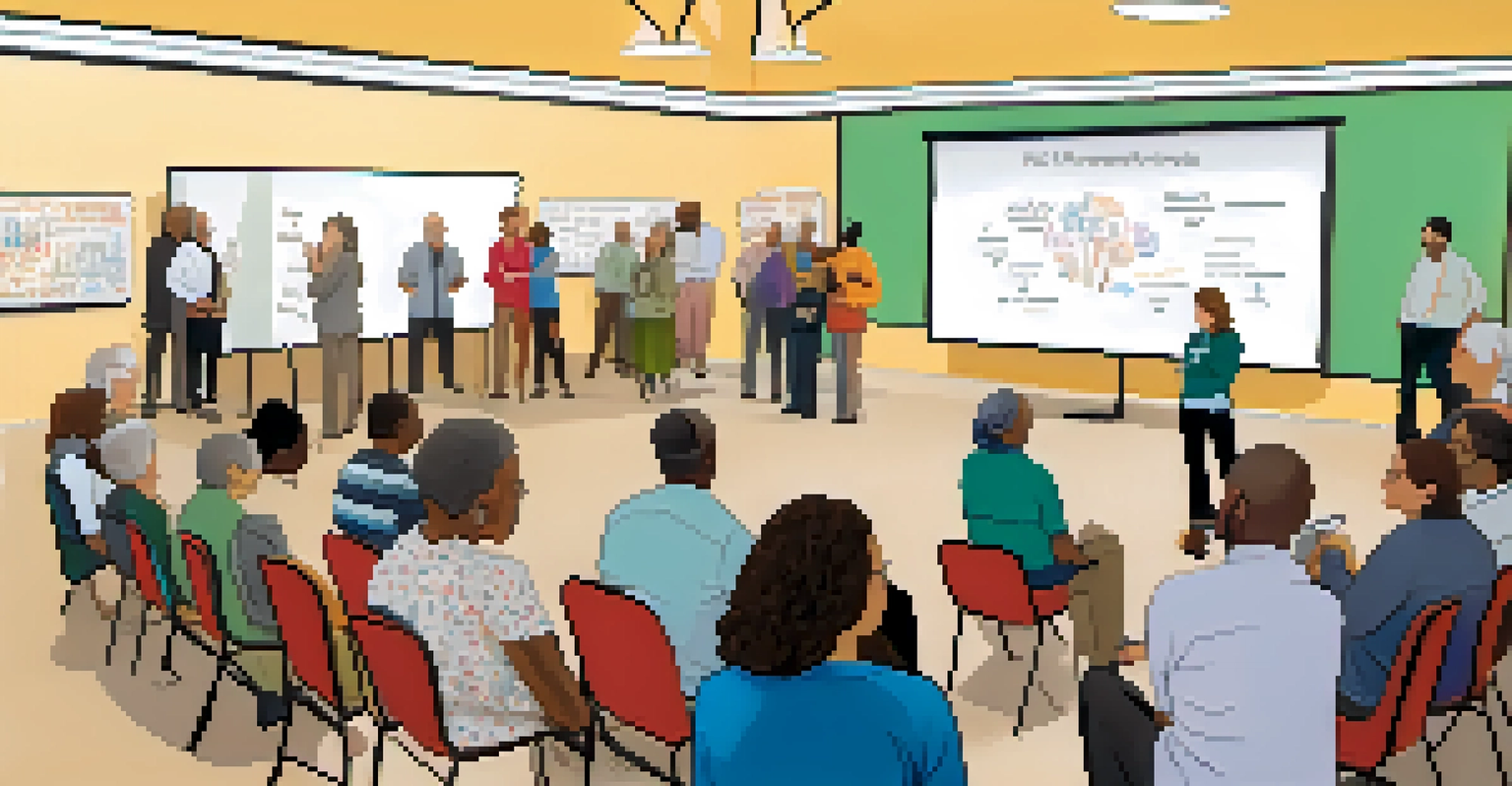Climate Adaptation Strategies for Illinois Communities

Understanding Climate Change Impacts in Illinois
Climate change is not just a distant threat; it's impacting Illinois right now. With rising temperatures and increased precipitation, communities are experiencing more frequent flooding and heatwaves. These changes affect agriculture, infrastructure, and public health, making it crucial for local leaders to understand these impacts.
Climate change is the defining issue of our time and we are at a defining moment. We face a direct existential threat.
For example, farmers are finding it harder to predict planting seasons and crop yields. Urban areas are facing challenges with stormwater management as heavy rains lead to overwhelmed systems. By grasping these realities, communities can better prepare for the future.
Recognizing these impacts is the first step toward developing effective adaptation strategies. Engaging with scientists and climate experts can provide valuable insights into specific local challenges. This foundational understanding sets the stage for proactive measures that can safeguard communities.
Creating Resilient Infrastructure for Communities
Infrastructure is the backbone of any community, and with climate impacts on the rise, it's essential to build resilience into these systems. This means designing roads, bridges, and drainage systems that can withstand extreme weather events. For instance, elevating roadways in flood-prone areas can minimize damage during heavy rains.

Moreover, retrofitting existing infrastructure to improve its durability can be a cost-effective strategy. Communities can invest in permeable pavements, which allow water to soak through, reducing runoff and flooding. These adaptations not only protect structures but also enhance overall community safety.
Impact of Climate Change in Illinois
Illinois is experiencing significant climate change effects, including rising temperatures and flooding, which threaten agriculture and public health.
Engaging local stakeholders in these infrastructure projects fosters a sense of ownership and collaboration. By involving residents in the planning process, communities can ensure that their unique needs and concerns are addressed, making the infrastructure more effective and widely supported.
Enhancing Urban Green Spaces for Climate Resilience
Urban green spaces play a vital role in climate adaptation by providing cooling effects and absorbing rainfall. Parks, community gardens, and green roofs can significantly reduce the urban heat island effect, which is particularly pronounced in cities like Chicago. These natural features not only help with temperature regulation but also improve air quality.
We do not inherit the earth from our ancestors, we borrow it from our children.
For example, a well-placed tree can lower the temperature of a street by several degrees, making it more comfortable for residents. Additionally, green spaces can serve as natural water management systems, absorbing excess rainwater and reducing runoff. This dual functionality makes them an essential component of climate resilience.
Furthermore, enhancing green spaces encourages community engagement and promotes mental well-being. By investing in parks and gardens, communities can create inviting spaces that foster social connections while simultaneously combating climate challenges.
Implementing Sustainable Agricultural Practices
Agriculture is a cornerstone of Illinois' economy, and adapting farming practices is crucial for sustainability amid climate change. Implementing sustainable agricultural practices, such as crop rotation and cover cropping, can improve soil health and reduce reliance on chemical fertilizers. These methods not only benefit farmers but also enhance the resilience of the entire ecosystem.
For instance, cover crops can help prevent soil erosion and retain moisture, which is vital during dry spells. Additionally, farmers can explore climate-smart agriculture techniques, such as precision farming, which uses technology to optimize resource use and reduce emissions. This adaptive approach can lead to both economic and environmental benefits.
Building Resilient Infrastructure
Communities need to design and retrofit infrastructure to withstand extreme weather, ensuring safety and functionality in the face of climate challenges.
Engaging farmers in workshops and providing access to resources can facilitate the adoption of these practices. By fostering collaboration between agricultural experts and local farmers, communities can create a robust support system that encourages sustainable farming methods.
Promoting Water Conservation and Management Strategies
Water scarcity is becoming an increasingly pressing issue, making effective water conservation and management strategies vital for Illinois communities. Implementing rainwater harvesting systems can help capture and store rainfall for future use, reducing pressure on local water supplies. This approach not only conserves water but can also lower utility costs for residents.
Moreover, investing in efficient irrigation systems can significantly reduce water waste in agriculture and landscaping. Drip irrigation, for example, delivers water directly to the plant roots, minimizing evaporation and runoff. These strategies ensure that every drop counts, especially during dry spells or droughts.
Educating residents about water conservation practices can amplify these efforts. Community workshops and campaigns can raise awareness about the importance of responsible water use, fostering a culture of conservation that benefits all.
Engaging Communities in Climate Adaptation Planning
Community engagement is crucial for the success of any climate adaptation strategy. Involving residents in the planning process ensures that their voices are heard and their unique needs are addressed. Strategies such as town hall meetings and surveys can provide valuable input from a diverse range of community members.
For instance, when residents feel invested in adaptation initiatives, they are more likely to support and participate in them. This collective effort can lead to innovative solutions that are tailored to the specific challenges faced by the community. By fostering a collaborative atmosphere, communities can harness local knowledge and creativity.
Importance of Community Engagement
Engaging residents in climate adaptation planning fosters collaboration and innovation, leading to tailored solutions that address local needs.
Additionally, building partnerships with local organizations and schools can extend engagement efforts. These collaborations can help disseminate information and resources, creating a more informed and proactive community that is prepared to tackle climate challenges together.
Leveraging Technology for Climate Adaptation Solutions
Technology offers powerful tools for addressing climate adaptation challenges in Illinois communities. Geographic Information Systems (GIS), for example, can help visualize climate risks and identify vulnerable areas. This data-driven approach enables communities to prioritize interventions and allocate resources effectively.
Moreover, smart technology can enhance infrastructure resilience—think sensors that monitor water levels in real-time, alerting officials to potential flooding. By integrating technology into adaptation strategies, communities can respond quickly and efficiently to climate impacts.

Investing in training programs that familiarize community members with these technologies can empower them. When residents understand how to use these tools, they can contribute to monitoring efforts and support local decision-making, creating a more resilient and informed community.